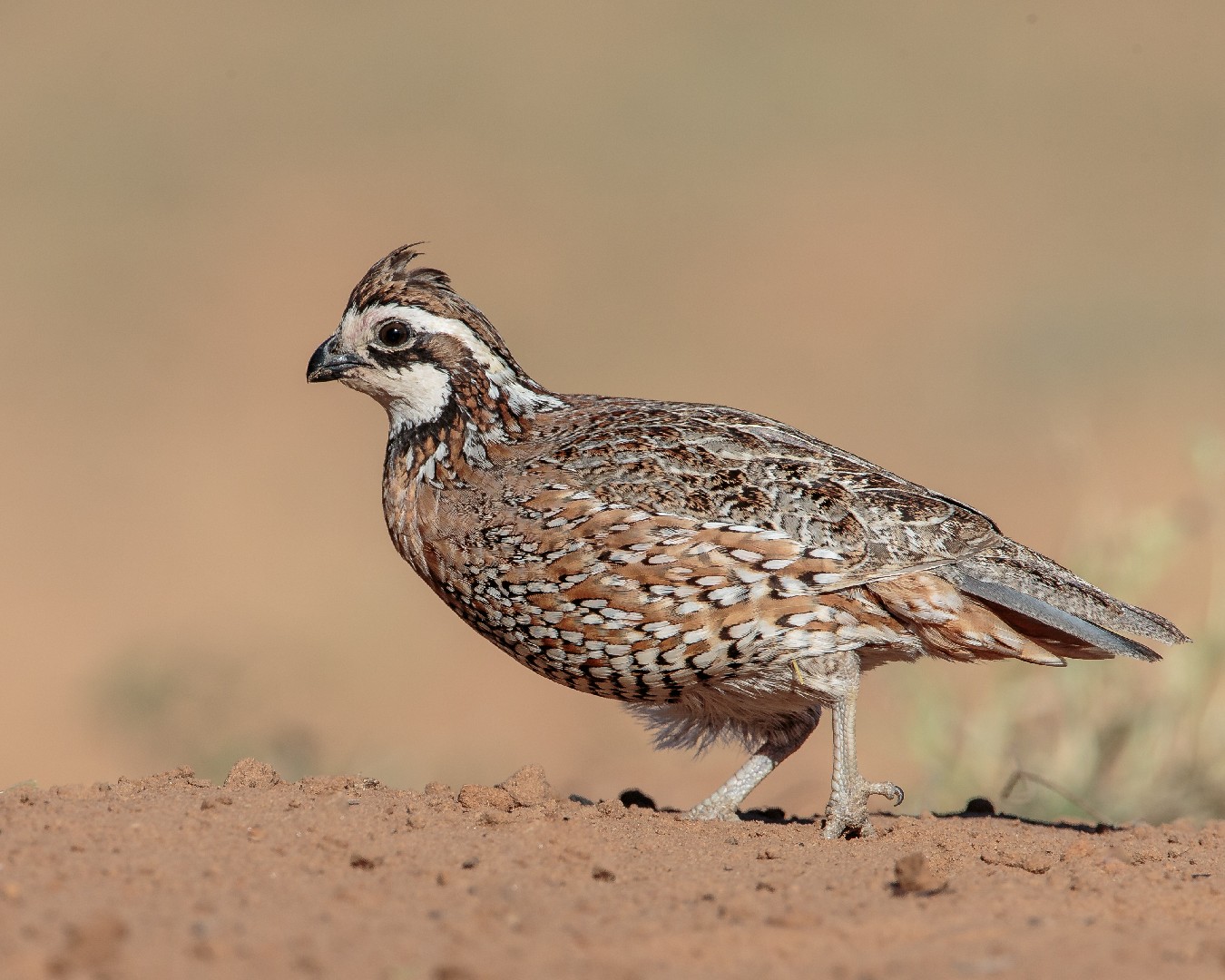Northern Bobwhite
A species of Bobwhites, Also known as Bobwhite Quail, Juvenile Snowflake Bobwhite Quail Scientific name : Colinus virginianus Genus : Bobwhites
Northern Bobwhite, A species of Bobwhites
Also known as:
Bobwhite Quail, Juvenile Snowflake Bobwhite Quail
Botanical name: Colinus virginianus
Genus: Bobwhites
Content
Description People often ask General Info
Description
The northern Bobwhite is a ground-dwelling species found in grasslands, pine forests, and open fields. While they usually stay on the ground, they are able to fly short distances to escape predators. There are 22 different subspecies of northern Bobwhite with some being popular game birds. Unfortunately, this has led one subspecies, the Masked bobwhite (Colinus virginianus ridgewayi), to become endangered.
Size
22 - 27 cm
Life Expectancy
1-6 years
Nest Placement
Ground
Clutch Size
7 - 28 eggs
Incubation Period
1 - 3 broods
Number of Broods
22 - 24 days
Nestling Period
1 day
Feeding Habits
Northern Bobwhite primarily consumes seeds and leaves, with increased insect intake during breeding season. Chicks eat mostly insects until 6-8 weeks old. Northern Bobwhite forages in groups, scouring on ground or low plants. In winter, they seek bare ground for food, feeding on crops, weeds, and plant seeds, with a diet shift to greens in spring and seeds with fruits and arthropods in summer.
Habitat
Northern Bobwhite thrives in open habitats of southeastern North America, preferring a blend of fields, grasslands, and light woodlands. These birds flourish in various stages of vegetation growth, often in areas with dynamic land use such as fire, agriculture, or logging. Key habitats include managed pine forests and coastal rangelands, with a reliance on woody cover in snowy conditions.
Nest Behavior
Northern Bobwhite pairs collaboratively select a site and construct the nest, involving both mates in digging and lining. Nest building spans approximately 5 days.
Nest Characteristics
Northern Bobwhite nests are typically found on the ground or in low vegetation, near openings. They are scrapes about 6 inches wide, 2 inches deep, lined with grass and vegetation, often covered by a woven arch of weeds and grasses for camouflage.
Dite type
Herbivorous
People often ask
General Info
Feeding Habits
Bird food type
Bird Feeder Type

Ground
Sounds
Call
Recording location: United States
Behavior
Northern Bobwhite exhibit specific social tendencies, predominantly existing within cohorts. They engage in foraging activities during dawn and dusk. A distinct nocturnal practice involves assembling in a circular formation on the ground, with bodies oriented outward for potential threats and warmth retention. Agonistic encounters between males escalate during mating periods, accompanied by intricate courtship rituals performed by both sexes. Their mating system is varied, with polygynous, polyandrous, and monogamous elements observed. Uncommonly, northern Bobwhite commingle their eggs with other avian species and employ distraction tactics against predators when safeguarding offspring.
Distribution Area
Its range covers the southeastern quadrant of the United States from the Great Lakes and southern Minnesota east to Pennsylvania and southern Massachusetts, and extending west to southern Nebraska, Kansas, Oklahoma, Colorado front-range foothills to 7,000 feet, and all but westernmost Texas. It is absent from the southern tip of Florida and the highest elevations of the Appalachian Mountains, but occurs in eastern Mexico and in Cuba. Isolated populations have been introduced in Oregon and Washington. The northern bobwhite has also been introduced to New Zealand.
Species Status
Not globally threatened.
